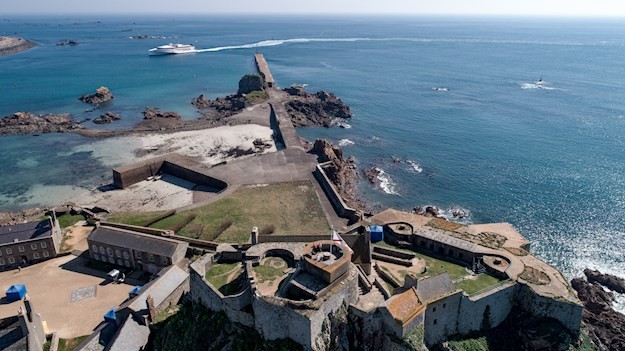The German forces converted the Castle into a powerful strongpoint consisting of two resistance nests, one facing west and another to the east, equipped with long-range coastal guns. The Upper Ward of the Castle became an anti-aircraft battery; searchlights and roll bombs, anti-tank guns, flamethrowers and a host of machine guns were also employed to protect the fortress. An underwater minefield at the entrance to the Harbour was controlled from a blockhouse on the Elizabeth Castle Breakwater.
Elizabeth Castle formed the backdrop to the scene as the Bailiff of Jersey departed for HMS Beagle on the morning of Liberation Day. He was accompanied by General Wulf who was to sign the Unconditional Surrender at 07:15am. On 10 May Royal Navy minesweepers searched the inter-Island channels and approaches to St. Helier Harbour to prepare for the arrival of the main Liberation force. The underwater minefield was disconnected.
On the morning of 12 May the first Landing Craft Artillery of the main Liberation Force landed at Elizabeth Castle. Two days later the Castle formed the backdrop for immense lines of German prisoners of war, as they waited to be evacuated to England aboard vast American landing ships.
